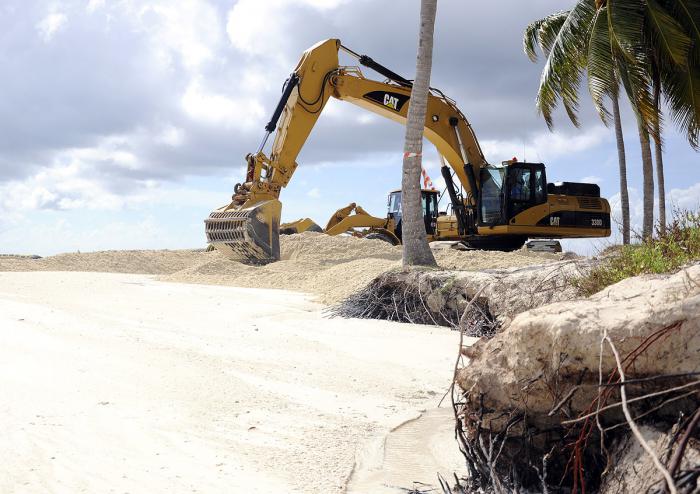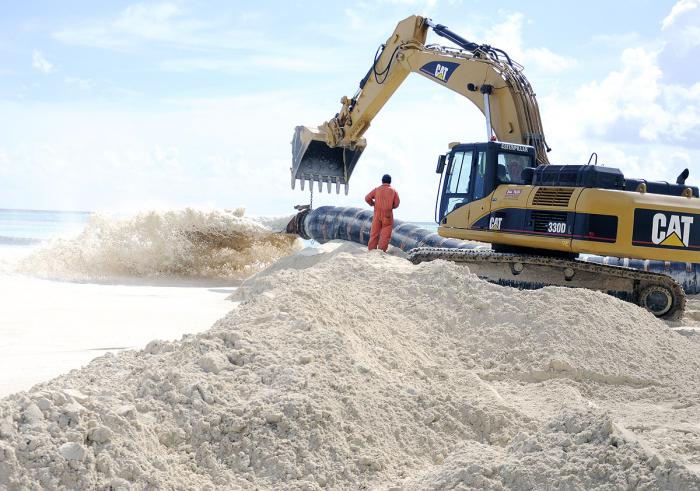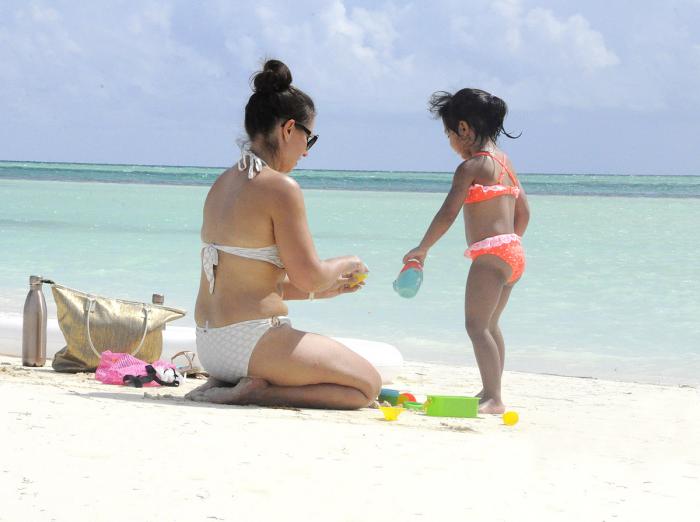
An unprecedented sand replenishment process is currently underway across the beaches of the Jardines del Rey tourist destination, north of the province of Ciego de Ávila, based on advances in science and technology. The beach rehabilitation efforts at the resort aim to rescue the natural splendor in areas heavily affected by erosion.
Such is the case at the Playa El Paso beach, located in Cayo Guillermo, where the past few weeks have seen a complete turnaround, thanks to the dredging, pumping and adequate distribution of sand from natural submerged sandbanks, located some distance from the coast.
This is not the first experience of its kind in the country. After implementing 13 similar projects in Varadero, the National Beach Recovery and Conservation Program has set its sights on Jardines del Rey, with beaches crying out for a sand replenishment process in the most deteriorated areas.
To this end, the Ministry of Science, Technology and Environment (CITMA) has placed its trust in the GANMA Investment Enterprise S.A., to ensure environmental diagnosis of the area’s cays and create the basis for implementing the program, in conjunction with representatives of the province.

Research conducted included geological and geophysical surveys and sampling to determine the compatibility of the sand to be extracted from supply zones with that of the destination beaches.
“It’s amazing how the matching color, texture and grain size ensures, after the depositing, that almost no difference between the two sands can be distinguished,” explains the MSc Miguel Izquierdo Álvarez, head of the project.
According to Yosvani Batista La Fortuna, responsible for the care of natural resources in Cayo Guillermo, the previous stage of the process also included the removal of buried and exposed structures and obstacles in the areas that would benefit. Workers from the Tourism Services Enterprise, for example, removed more than 500 cubic meters of debris from the zone, constituting a deplorable blot on the coastline.
Kiosks, beach umbrellas, sun loungers, and other objects or installations were temporarily removed to ensure the speed, rigor, and quality of the works, as demanded by a project of such vast environmental and tourist scope.
CAREFUL DREDGING
Dr. Ernesto Tristá Barrera, National Coordinator of the Program, confirms that the works will initially cover an area stretching 3.5 kilometers at the El Paso beach, Cayo Guillermo, before continuing at the Los Flamencos beach, and then the Las Coloradas and Playa Larga beaches, located in Cayo Coco, to total 7.8 kilometers.

This means moving some 855,000 cubic meters of sand, dredged from the supply zones of La Jaula and Felipe, at distances ranging from 700 to 4,400 meters from the coast.
Although the recovery of Playa Larga will use the Cuban-made Quality Star sand suction dredge machine, to provide about 225,000 cubic meters of sand, most of the works are carried out by the Dutch Dravo Costa Dorada suction dredger vessel.
The ship is designed to perform deep sea dredging, with two hydraulic suction pipes that operate in harmony with jet pumps to absorb sand (mixed with water), and deposit it in a large open hopper, from which it flows to a connection point and is pumped, through pipes, to the selected location on the beach.
We asked Dr. Ernesto whether removing biogenic sand (produced by living organisms, such as calcareous algae) to benefit these beaches could result in damage to the “donor” areas. He replied: “Absolutely not. Preliminary studies on the matter dispelled any doubts. There is no damage to either supply zonee, each with more than one million cubic meters of sand, highly favored by currents and where no marine vegetation that can be hurt is observed. We are talking, in short, about natural reservoirs fit to provide supplies, without destroying or damaging any ecosystem.”
As a result of such procedures, the beach area has expanded from just two or three meters, in some segments, to about 40, with the consequent positive environmental impact and improved quality for tourists.
Ramón Pina, a representative of the Sercotel Club Cayo Guillermo, a Spanish chain, reiterates: “I wouldn’t believe if had I not seen it. I think it’s spectacular. I did not expect it. The quality of the sand is very high; I think it is even whiter. All this will reinforce the product that our hotel will continue to offer tourists, also with opportunities to develop beach sports here.”
With the resort reopened, a woman and her child were the first to enjoy the seascape on the wide strip of sand, where human efforts have returned a protective layer to this threatened natural wonder.















